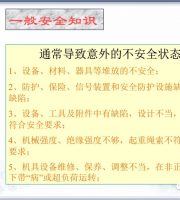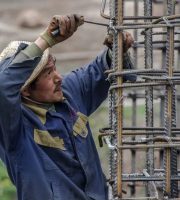There are two basic conditions for Piping: (1) the foundation soil layer is cohesionless and has strong water permeability.
“Piping” is a typical seepage failure form of foundation.

This disrupted the plans of some travelers.

The second is that there are several water gushing points from bottom to top at the sinking square.
Although the sunken square was completely soaked in water, there was no obvious water trace on the ground above the square.
Based on the above points, it can be inferred that the first water flows into the hall floor of the subway station from below the ground of entrance and exit C, and then into the platform floor.
As more and more photos and videos are released online, it is found that not only the platform floor, but also the station hall floor are also soaked in water.
It can also be confirmed from the typical geological profile near Jinsha lake that there are silt layers with strong water permeability more than 20 meters below the ground.
The negative second floor is the platform floor and the negative first floor is the station hall floor.
Hangzhou Jinsha Lake Station was opened in 2012.
These water gushing points not only continuously flow out of water, but also bring out a lot of sediment, forming a “soil ring” around.
Aerial view of Jinsha Lake Park.
When there is a water level difference on both sides of the underground structure, the side with high water level will form pressure to force the groundwater to flow to the low water level, which is often called “water to flow to the low”.
At outlet B and outlet D, emergency closure was carried out after the water inflow event, but no obvious water trace was seen.
No one wants to take a detour when going home near the end of the day.

The flow of groundwater around the bottom of the structure may take away some soil particles at the same time.


In order to completely prevent this phenomenon, the structure should completely penetrate the soil layer to form a barrier.
Otherwise, it is still possible for groundwater to bypass the bottom of the structure and maintain the characteristics of flowing to the low water level.
At the same time as the photos of other entrances and exits (left) and the station hall floor (right), the phenomenon of water inflow was also observed at the sunken square near entrance and exit C.
Excessive pressure will not be generated in the process of groundwater flow; (2) The ballast on the upper part of the foundation at the low water level side is insufficient.
There are four entrances and exits in different directions, which are connected with the surrounding shopping malls and roads.
Jinsha Lake Station is located on the station hall floor.
Piping conditions, however, not all soil layers are at risk of piping.

The soil ring formed at the water outlet during piping (schematic diagram) therefore, the second inference is obtained: it is inferred that the foundation of the sunken square in the south is suspected to have piping damage.
It is obvious from the typical geological profile of Jinsha Lake area that the sinking square in the south is likely that the whole structure is in silt layer, including the bottom..
If the upper part of the foundation on the low water level side has enough water-proof weight (such as cohesive soil with a certain thickness or waterproof underground structure), even if the groundwater flows smoothly to the low water level side, there is not enough pressure to gush out of the foundation.
This may be the origin of the subway station.


Jinsha Lake Station was flooded.
Does the sunken square in the South have these two conditions? Thousands of years ago, there were many rivers and lakes in Hangzhou.
When these taken away soil particles come to the ground, they will deposit near the water outlet and form a circle of “soil rings”.
Whenever water enters the subway station, it always seems to be related to the rain.
It’s hard not to feel depressed at the thought of being trapped in an underground space.
According to other photos taken in the distance, in addition to the water at the entrance and exit of subway station C, another sunken square in the south of the subway station was also observed.
The station hall floor is also full of ponding, which reminds people of the accident of Zhengzhou subway last year.

Is it caused by the extreme weather this time? Where did the water come from? However, there was no rainstorm in Hangzhou on May 18, and there was not even a drop of rain.
It is a subway station with two floors underground.

Driven by flowing water, some coarse particles are gradually deposited underground, forming the uppermost overburden layer at present.
Then, does the water leak from Jinsha lake? According to the photos of the platform floor, water keeps pouring down from the ceiling, indicating that the water on the platform floor flows in from the upper station hall floor.
On the afternoon of May 18, Hangzhou Metro suddenly announced that Jinsha Lake Station was passing without stopping.
Entrance and exit C is close to Jinsha lake.
Is there a certain connection between the water inflow on the north and south sides? Did it happen at the same time? In addition to the muddy water, there are two unique phenomena in the sunken square in the south.


The sinking square 400m to the South also has water inflow.
Although there was water on the ground, there was no water leakage from the ceiling.
It is worth noting that the entrance and exit of Jinsha Lake Station is Jinsha Lake Park, which has the largest artificial lake in Hangzhou: Jinsha lake.

First, there are strip-shaped subsidence cracks on the ground, which seem to connect the protrusion of Jinsha lake with the sinking square structure.
Interestingly, the sunken square in the south is 400m away from the subway station.

Where does such a large amount of water come from in the evening in Jinsha Lake Station area? According to the spatial structure of Jinsha Lake Station and the photos of the scene of the incident, we might as well make some analysis.
Shortly after the announcement, the passengers on the subway soon knew the reason, and some even broke out in a cold sweat.
The water poured down from the ceiling of the platform floor.
When too many soil particles are taken away, a complete seepage channel will be formed in the foundation, which will eventually induce “piping” failure.
When the train passes through the flying station, the screen door on the platform floor is full of muddy ponding.
At that time, there was a rare torrential rain in Zhengzhou, and Metro Line 5 was flooded, trapping up to 500 people.
A “soil ring” is formed, which is one of the obvious characteristics of “piping” in the foundation soil layer.




